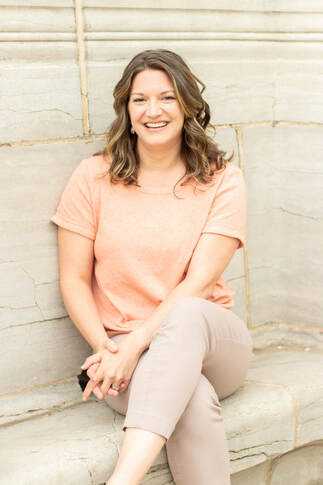Iowans Thrive Blog
Featuring stories, research, and news on Iowa's movement to respond to ACEs
|
|
 By Emily Johnson, Teacher Well-Being Coach, Tuned In Teachers Like many remote teachers, I have enjoyed donning yoga pants, a dressy blouse, and earrings when participating in online classes. As we move closer to the start of the school year, teachers will need to continue to wear their stretch pants as flexibility will be the way of classroom life for 2020-2021. We may have to change the learning environment with a day's notice, we may gain and lose students due to illness, and we may need to adjust our instruction in response to the changes around us. Being flexible first requires us to acknowledge the feelings we have about the year ahead. While we have always experienced stress in trying to support all of our students’ needs and keep up with the demands of our professional and personal lives, this year has brought significant tensions, as we wrestle with grief, uncertainty, fear, and exhaustion. Our ability to care for ourselves and create an environment of connection and support is critical to serving our students and their families, who are also facing similar tensions. To prepare for the resilience that we will need, we must ground ourselves in practices that support our well-being and the well-being of our students. I would like to offer the following practices to create a foundation for us to react to changes in a more fluid way. Morning Meeting (for Yourself!)
Do you already have a morning routine that sets up your day for success? No matter if you are teaching at school or in your home office or dining room table, centering yourself each day with a customized practice can re-connect you to your purpose of serving your students. A morning ritual may consist of a cup of coffee or tea, stretching, following a guided meditation, or reciting a mantra. Saying something to yourself as simple as "I believe in you. Keep going." can give you the "oomph" to greet your day and class with confidence. Look Them in the Eye As humans, we are wired for connection - to be seen, heard, and understood. One way to show that our attention is in the right place is by looking at people in their eyes. This is easy to do when we are at school, greeting our students at our classroom doors with a smile and a brief catch-up conversation. If we are teaching remotely, however, it is a bit trickier. To meet the desire for attention and eye contact, we have to look directly into the camera on our computers - not the people's faces on our screens, the windows that we have open, nor the notes we have written on papers nearby. It is a subtle, but powerful, difference. And it doesn't feel right as we naturally want to look at the faces on our screens, but the effect is that students feel connected. When you look into that little camera while you speak, it seems like you are looking into their eyes! Pioneering Perspective We've never done school like this before. If you think about it, both you and your students are pioneers - exploring new ways to connect, learn, and grow. As teachers, we tend to have a more traditional view of education, which can leave us pining for the ways of the past. For our students, they are going with the flow. They are looking to us to be their guides in this new territory. Instead of wishing things could be different or assuming these changes will be hard, we can take a more hopeful outlook - looking for the best in each other and the learning that we can create. Reflect, Reflect, Reflect As teachers, we naturally reflect on our students and their progress. But in these very different times, we need to set aside time to reflect on our emotional health and the health of our classrooms. We may consider reflecting on the following questions:
We are in this together By adopting these practices, we create a stable ground for ourselves so we can be flexible with the changes around us and with each other. To "bend but not break," we need to remember that we are all in this together. Now is not the time to "be strong" and "soldier on." We must lean on each other and ask for help. Wouldn't it be great if we could look back and be proud of how we handled ourselves? Be proud that we modeled for our students that by working together, we can do hard things? For us to answer a resounding, "yes," we can start by creating routines to support ourselves, connecting with our students, maintaining a positive outlook, and reflecting to promote a healthy learning environment for ourselves and our students. Find a space to connect with other teachers and find support with your well-being at community.tunedinteachers.com or by clicking the button below: Comments are closed.
|
Hi!Here we share what's happening in Iowa to respond to adverse childhood experiences (ACEs). Topics |
|
Connect with us
|
Iowa ACEs 360
501 SW 7th St., Suite G Des Moines, IA 50309 |